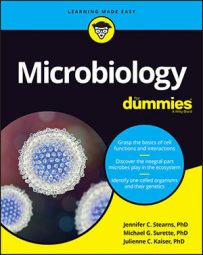Differences among bacteria, archaea, and eukaryotic microorganisms
There are three domains of life: bacteria (also known as eubacteria), archaea, and eukarya. The bacteria and archaea are made up entirely of microorganisms; the eukarya contains plants, animals, and microorganisms such as fungi and protists. The bacteria and archaea have been grouped together and called prokaryotes because of their lack of a nucleus, but the archaea are more closely related to the eukaryotes than to the bacteria.
Here are other major differences between the three domains:
| Bacteria | Archaea | Eukaryotes | |
|---|---|---|---|
| Cell type | Prokaryotic | Prokaryotic | Eukaryotic |
| Cell wall | Made of peptidoglycan | Does not contain peptidoglycan | In plants and fungi, composed of polysaccharides |
| Sensitivity to antibiotics | Yes | No | No |
| First amino acid during protein synthesis | Formylmethionine | Methionine | Methionine |
| DNA | Mostly circular chromosome and plasmids | Circular chromosome and plasmids | Linear chromosome, rarely plasmids |
| Histones | No | Yes | Yes |
| Organelles | No | No | Yes |
| Ribosomes | 70S | 70S | 80S |
Microbial classification and the naming system
To keep the many organisms on Earth straight, in the 18th century the Swedish botanist Carl Linnaeus developed a simple nomenclature system to classify and name all organisms including bacteria. This system ranks all organisms using the following headings, shown with the example of the bacterium E. coli:
Domain: Bacteria
Phylum: Proteobacteria
Class: Gammaproteobacteria
Order: Enterobacteriales (order names always end in –iales)
Family: Enterobacteriaceae (family names always end in –aceae)
Genus: Escherichia
Species: Coli
Organisms are uniquely identified by the genus and species names, which are always either italicized or underlined, the genus is often shortened to the first letter (for example, E. coli).
How microorganisms are identified
Microorganisms can’t be seen with the naked eye, so they’re identified in several indirect ways:
-
Microscopy to identify cell shape or appearance of spores. Cells are often stained to enhance cellular features, and the properties of the cell wall are used in the classification of microorganisms.
-
Appearance of colonies on laboratory media is a widely used method of distinguishing between different microbes, mainly bacteria.
-
Rich media allows the growth of a broad range of bacteria.
-
Selective media allow the growth of only a narrow range of bacteria.
-
Differential media contain dyes that react with the chemical processes of certain types of bacteria, allowing their identification.
-
Characteristics of bacterial colony growth are described in terms of shape, appearance, and color.
-
-
The differences in DNA sequence can be used to identify organisms. Marker genes include, but are not limited to, ribosomal RNA (16S in bacteria and archaea and 18S in eukaryotes except fungi where the internal transcribed spacer [ITS] region of the gene is used) and cpn60 (chaperonin-60) genes.
-
Biochemical tests can be used to identify the type of metabolism a microorganism uses based on the products it makes from defined substrates.
-
Bergey’s Manual of Systematic Bacteriology is used to identify bacteria based on microscopy, ability to grow on specific media, appearance of colonies, and biochemical tests of metabolism.

